-
 Mladen BarbaricPearl Studios, MontrealTBA
Mladen BarbaricPearl Studios, MontrealTBA -
 Amanda McGlothlinMutual Mobile, Los AngelesTBA
Amanda McGlothlinMutual Mobile, Los AngelesTBA -
 Cédric ChampeauPivotal, Nantes“Groovy & Android: a winning pair”
Cédric ChampeauPivotal, Nantes“Groovy & Android: a winning pair” -
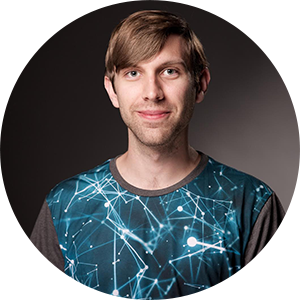 Scott GoodsonFacebook, San FranciscoTBA
Scott GoodsonFacebook, San FranciscoTBA -
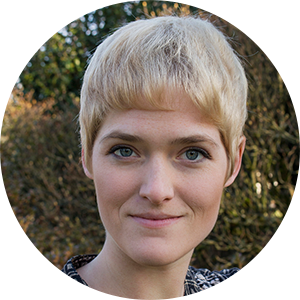 Amber CaseEsri, Portland“Designing Calm Technology”
Amber CaseEsri, Portland“Designing Calm Technology” -
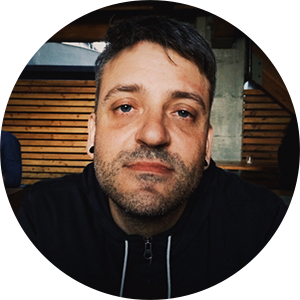 Kito DietrichMutual Mobile, Los AngelesTBA
Kito DietrichMutual Mobile, Los AngelesTBA -
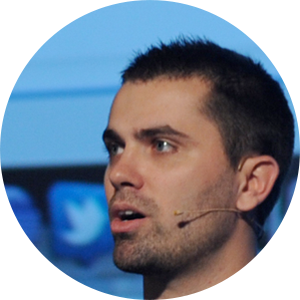 Pierre-Yves RicauSquare, Paris“Mortar & Flow”
Pierre-Yves RicauSquare, Paris“Mortar & Flow” -
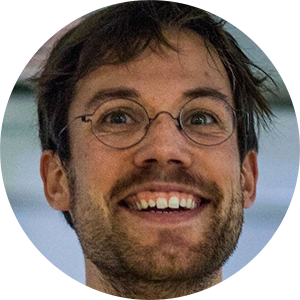 Chris Eidhofobjc.io, Berlin“Fun with Swift”
Chris Eidhofobjc.io, Berlin“Fun with Swift” -
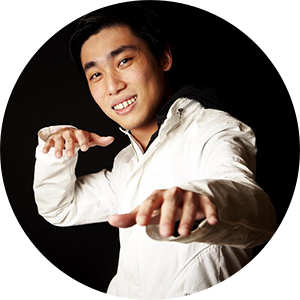 Min Ming LoPixelapse, San Francisco“Open Design Movement”
Min Ming LoPixelapse, San Francisco“Open Design Movement” -
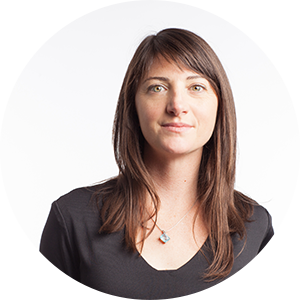 Courtney HemphillCarbon Five, San Francisco“Mixing Lean UX and Agile Development”
Courtney HemphillCarbon Five, San Francisco“Mixing Lean UX and Agile Development” -
 Tim MesserschmidtPayPal/BrainTree, Berlin“Death to passwords”
Tim MesserschmidtPayPal/BrainTree, Berlin“Death to passwords” -
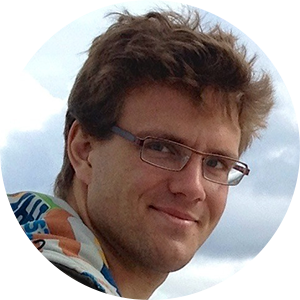 David RönnqvistSkype, Stockholm“Made for Everyone”
David RönnqvistSkype, Stockholm“Made for Everyone” -
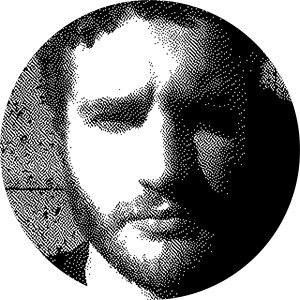 Jonathan BergerPivotal Labs, NY“Towards a Theory and Methodology of Test‑Driven Design”
Jonathan BergerPivotal Labs, NY“Towards a Theory and Methodology of Test‑Driven Design” -
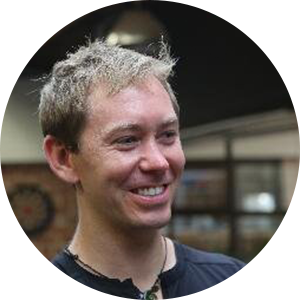 Kevin Rohlingship.io, San FranciscoTBA
Kevin Rohlingship.io, San FranciscoTBA -
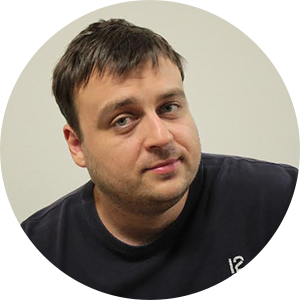 Nikolay ElenkovFreelance, Tokyo“Lollipop Security Enhancements”
Nikolay ElenkovFreelance, Tokyo“Lollipop Security Enhancements” -
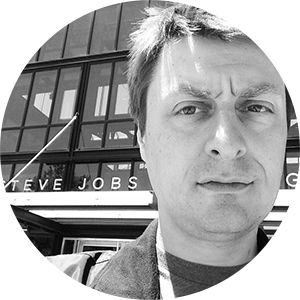 Tom MaesAcast AB, StockholmTBA
Tom MaesAcast AB, StockholmTBA -
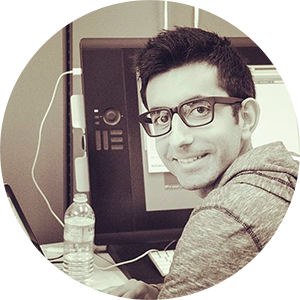 Alex ShiraziPhlint, Santa Clara“Intuition Factors of the User Experience Design Process”
Alex ShiraziPhlint, Santa Clara“Intuition Factors of the User Experience Design Process” -
 Cassie ShumThoughtWorks, NY“Mobile development in a post Continuous Delivery world”
Cassie ShumThoughtWorks, NY“Mobile development in a post Continuous Delivery world” -
 Svetlana IsakovaJetBrains, Saint Petersburg“Kotlin the Swift of Android”
Svetlana IsakovaJetBrains, Saint Petersburg“Kotlin the Swift of Android” -
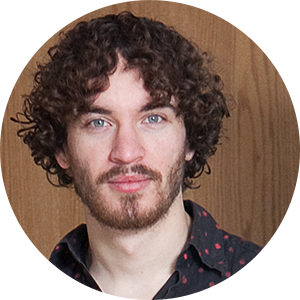 Mike Lazer-WalkerFreelancer, NY“What does it mean for code to be maintainable?”
Mike Lazer-WalkerFreelancer, NY“What does it mean for code to be maintainable?” -
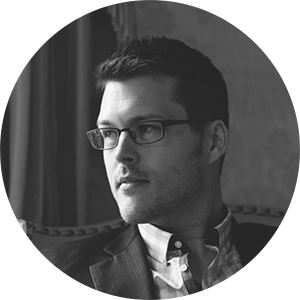 Dave WiskusBetter Elevation, NY“Designing for Humans”
Dave WiskusBetter Elevation, NY“Designing for Humans” -
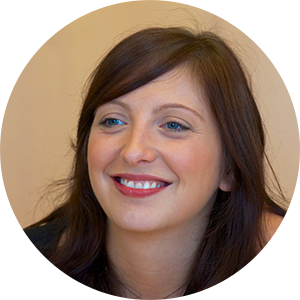 Rachel LaycockThoughtWorks, New York“Mobile development in a post Continuous Delivery world”
Rachel LaycockThoughtWorks, New York“Mobile development in a post Continuous Delivery world” -
 Lucas RochaMozilla, London“TwoWayView: RecyclerView made simple”
Lucas RochaMozilla, London“TwoWayView: RecyclerView made simple” -
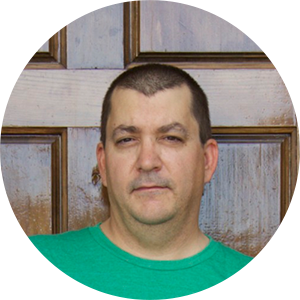 Marcus S. ZarraMartianCraft LLC, San FranciscoTBA
Marcus S. ZarraMartianCraft LLC, San FranciscoTBA -
 Joe CieplinskiBombing Brain Interactive, NY“Design As if No One is Watching”
Joe CieplinskiBombing Brain Interactive, NY“Design As if No One is Watching” -
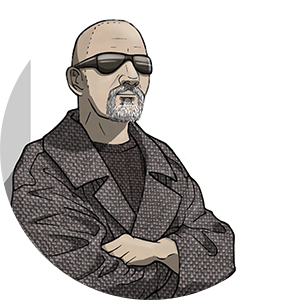 QiThe Codeless Code, Washington“Hacking the Mind II”
QiThe Codeless Code, Washington“Hacking the Mind II” -
 Eric LafortuneSaikoa, Leuven“Fighting application size with ProGuard and beyond”
Eric LafortuneSaikoa, Leuven“Fighting application size with ProGuard and beyond” -
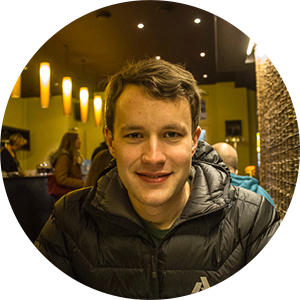 Adam ErnstFacebook, NY“Immutable Models on iOS”
Adam ErnstFacebook, NY“Immutable Models on iOS” -
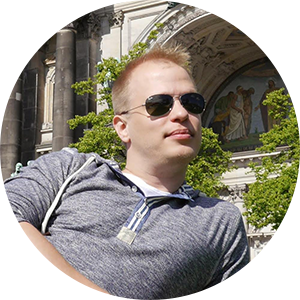 Juhani LehtimäkiFatrobot, Munich“Dear developers design details matter”
Juhani LehtimäkiFatrobot, Munich“Dear developers design details matter” -
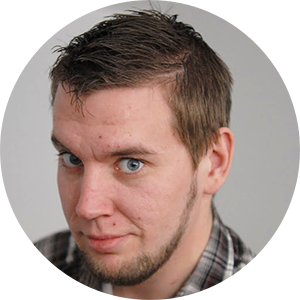 Karl-Henrik NilssonSogeti, Borlänge“Hacking your home”
Karl-Henrik NilssonSogeti, Borlänge“Hacking your home” -
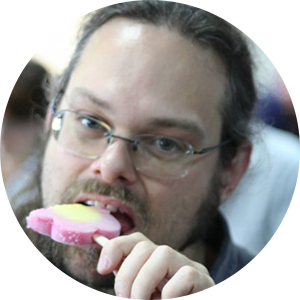 Daniel WeaverFacebook, Menlo Park“Scaling Android Apps for Emerging Markets”
Daniel WeaverFacebook, Menlo Park“Scaling Android Apps for Emerging Markets” -
 Krzysztof ZabłockiMashable, Warsaw“Stop recompiling”
Krzysztof ZabłockiMashable, Warsaw“Stop recompiling” -
 Wiebe ElsingaFreelancer, Culemborg“Going from a good Android design to an awesome one”
Wiebe ElsingaFreelancer, Culemborg“Going from a good Android design to an awesome one” -
 Akhilesh GuptaLinkedIn, San Francisco“Making your app context aware”
Akhilesh GuptaLinkedIn, San Francisco“Making your app context aware” -
 Andy PiperTwitter, LondonTBA
Andy PiperTwitter, LondonTBA -
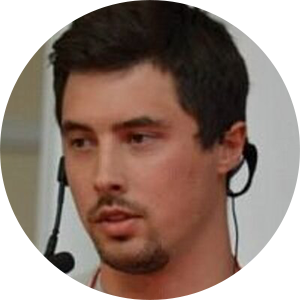 Max BazaliyBluebox Security, Kiev“Securing iOS applications”
Max BazaliyBluebox Security, Kiev“Securing iOS applications” -
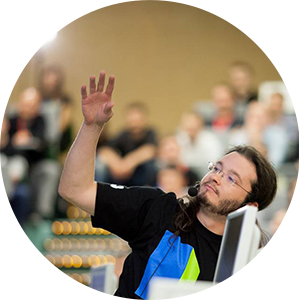 Rob AshtonFreelance, GlasgowTBA
Rob AshtonFreelance, GlasgowTBA

Pearl Studios, Montreal
Mladen Barbaric is a brand and product craftsman. He is the Founder and CEO of Pearl Studios an award winning brand and product development firm headquartered in Montreal and known for elegantly disruptive brands and products such as Misfit SHINE. Starting his career in design at 19 Mladen began by designing cars at Ford. He holds a degree in Industrial Design from CCS in Detroit. In addition he serves on advisory boards and as Chief Design Product and Brand Officer for several of client-friends of Pearl.
TBA
TBA

Mutual Mobile, Los Angeles
Amanda is a Creative Director at Mutual Mobile who focuses on design simplicity and how the successful intersection of design and engineering creates great products. She leads clients through the initial planning stages to help devise a product roadmap that balances business objectives with the needs of real users. Always keeping end-user satisfaction at the front of every initiative she is a recognized leader in mobile design speaking at events such as SXSW in Austin and Las Vegas.
Before joining Mutual Mobile Amanda polished her visual design and user interface knowledge working for a boutique agency where she helped manage everything from branding to front-end development. Amanda has also worked in marketing and advertising and operated her own photography studio.
Before joining Mutual Mobile Amanda polished her visual design and user interface knowledge working for a boutique agency where she helped manage everything from branding to front-end development. Amanda has also worked in marketing and advertising and operated her own photography studio.
TBA
TBA

Pivotal, Nantes
Cédric was a long time contributor to the Groovy language before being employed to work on it. He used it as a platform to develop DSLs for example in natural language processing where he contributed features aimed at empowering the development of DSLs with Groovy. Lately he focused on both type safety of the language and performance through type checking and innovative features like type checking extensions. He is currently working on the support of the Groovy language to develop Android applications.
“Groovy & Android: a winning pair”
For 10 years Groovy has dramatically improved the productivity of Java developers on the desktop. With unique like closures builders AST transformations traits optional static compilation and many more Groovy turned out to be a very competitive language on the JVM. Compared to other JVM languages Groovy has the major advantage of being totally Java-friendly both in terms of syntax and interpretability. But during those years what happened on the mobile world? In particular Android developers are used to develop applications in Java so why Groovy a JVM language wouldn't be usable for Android development too? Can we ease the pain of Android developers too?

Facebook, San Francisco
Scott Goodson is a senior member of the iOS community having started as the tenth engineer building iPhone OS 1.0. In the last few years he has managed the renowned Facebook Paper and Instagram iOS engineering teams to develop exceptionally polished apps. Scott graduated from UC Berkeley at 18 with a double major in Electrical Engineering and Computer Science. Since the launch of Paper in January 2014 Scott has championed the release of six major open source projects from its massive codebase — the first iOS projects open sourced by Facebook in 3 years.
TBA
TBA

Esri, Portland
Amber Case is the Director of Esri's R&D Center Portland where she works on next generation location-based technology. Previously she co-founded Geoloqi a location-based software company acquired by Esri in 2012.
In 2012 she was named one of National Geographic's Emerging Explorers and made Inc Magazine's 30 under 30 with Geoloqi co-founder Aaron Parecki. Case has spoken at TED on technology and humans and regularly speaks around the world.
Case is a proponent of data ownership and uses her domain as her own personal data store and identity provider.
Case foundedIndieWebCamp with Tantek Çelik and Aaron Parecki in 2010. Case is interested in furthering the ideas of Calm Technology wearable computing and the future of the interface. You can follow her on Twitter @caseorganic or at caseorganic.com.
In 2012 she was named one of National Geographic's Emerging Explorers and made Inc Magazine's 30 under 30 with Geoloqi co-founder Aaron Parecki. Case has spoken at TED on technology and humans and regularly speaks around the world.
Case is a proponent of data ownership and uses her domain as her own personal data store and identity provider.
Case foundedIndieWebCamp with Tantek Çelik and Aaron Parecki in 2010. Case is interested in furthering the ideas of Calm Technology wearable computing and the future of the interface. You can follow her on Twitter @caseorganic or at caseorganic.com.
“Designing Calm Technology”
We cannot interact with our everyday life in the same way we interact with a desktop computer. Technology shouldn't require all of our attention just some of it and only when necessary. How can our devices take advantage of location proximity and haptics to help improve our lives instead of get in the way? This presentation covers the history of calm technology wearable computing and how designers can make apps “ambient” while respecting privacy and security. We'll look at ambient notifications compressing information into other senses and designing for the least amount of cognitive overhead.

Mutual Mobile, Los Angeles
Kito is a managing-partner at Mutual Mobile who takes a hands-on approach to continuously improving product ideation and delivery processes. He possesses extensive experience with e-commerce and video-on-demand services. He has 25 years of career experience in software development project management and multimedia for web and mobile - a passion that started at age 7 when he designed his first piece of software on the Commodore 64.
Working for almost a decade as a freelancer Kito specialized in sound design video editing and video compositing as well as transaction-based processes and scalable back-end systems. His work on popular music software such as Ardour jackd and FXpansion’s BFD enabled him to draw on both his musical training and extensive technical experience.
Working for almost a decade as a freelancer Kito specialized in sound design video editing and video compositing as well as transaction-based processes and scalable back-end systems. His work on popular music software such as Ardour jackd and FXpansion’s BFD enabled him to draw on both his musical training and extensive technical experience.
TBA
TBA

Square, Paris
Pierre-Yves Ricau is Android Software Engineer at Square an innovative company that creates sleek reliable instruments of commerce. He contributes to several open source projects and created the AndroidAnnotations framework in 2010.
“Mortar & Flow”
Open-sourced libraries by Square -the talk shows how and why we created these things.

objc.io, Berlin
Chris is the creator of objc.io Deckset and the book Functional Programming in Swift.
“Fun with Swift”
TBA

Pixelapse, San Francisco
Lo Min Ming is the cofounder of Pixelapse a visual version control and collaboration platform for designers. He frequently talks about design engineering and entrepreneurship. Recently he is championing the Open Design Movement.
“Open Design Movement”
TBA

Carbon Five, San Francisco
Courtney Hemphill is a Partner and Tech Lead at Carbon Five in San Francisco CA. Over the past 10+ years Courtney has worked on teams of developers and designers using full stack technology on web and mobile projects for clients including Autodesk Skype SFMOMA and Sharethrough.
An outspoken advocate for integrating design processes into quick development cycles Courtney and the teams at Carbon Five are focused on crafting applications that are tested automatically through code as well as through interactions with real customers. She also coaches and speaks about techniques that optimize this feedback loop.
Courtney coordinates Carbon Five’s Tinderbox events the SOTP Innovation Series with Autodesk and frequently contributes to the Women Who Code and RailsBridge organizations. She often travels to speak and mentor at both design and development conferences such as SXSW HTML5DevConf ForwardJS and GOTO Conferences worldwide.
Courtney also finds a healthy amount of time to unplug from the internets traveling in search of the best rock climbing spots in the world always returning to her primary stomping ground in Yosemite Valley.
An outspoken advocate for integrating design processes into quick development cycles Courtney and the teams at Carbon Five are focused on crafting applications that are tested automatically through code as well as through interactions with real customers. She also coaches and speaks about techniques that optimize this feedback loop.
Courtney coordinates Carbon Five’s Tinderbox events the SOTP Innovation Series with Autodesk and frequently contributes to the Women Who Code and RailsBridge organizations. She often travels to speak and mentor at both design and development conferences such as SXSW HTML5DevConf ForwardJS and GOTO Conferences worldwide.
Courtney also finds a healthy amount of time to unplug from the internets traveling in search of the best rock climbing spots in the world always returning to her primary stomping ground in Yosemite Valley.
Mixing Lean UX and Agile Development: Evolved processes for designing and deploying apps on devices and mobile.
Using two specific case studies as well as learnings from additional projects I walk attendees through the weekly cadence that we use at Carbon Five during product development. This methodology and its activities establish a sustainable culture of integrated and invested teams that are able to communicate across disciplines in a meaningful way.The result of creating this type of culture via cadence allows our teams to put new features in front of users each week for validation and hence move the product closer to its market fit faster.

PayPal/BrainTree, Berlin
As a long time mobile and web developer Tim channels his knowledge and experience as Braintree's Head of Developer Advocacy. He is passionate about startups and served as mentor at multiple incubators and accelerators.
Prior to joining PayPal Tim worked with Neofonie Mobile and Samsung focusing on several mobile projects. In his spare time he leads and creates training classes in all sorts of developer-oriented topics contributes to Open Source projects and is one of the authors of the Mobile Developer’s Guide to the Galaxy. In addition he authored numerous articles published in print magazines.
Prior to joining PayPal Tim worked with Neofonie Mobile and Samsung focusing on several mobile projects. In his spare time he leads and creates training classes in all sorts of developer-oriented topics contributes to Open Source projects and is one of the authors of the Mobile Developer’s Guide to the Galaxy. In addition he authored numerous articles published in print magazines.
“Death to passwords”
User authentication in mobile applications is a very common and integral use case. Implementing regular passwords is an easy solution for developers but comes with several pitfalls that impair user experience like (re-)entering passwords the need to create a new unique password or even just the input of personal data on a flaky keyboard while registering a new account.
In this talk the security flaws and UX implications of passwords will be discussed and highlighted which different techniques exist that are able to offer a more mobile friendly flow. Highlighting authorization and authentication techniques like OAuth OpenID Connect and even hardware features like Bluetooth Low Energy this talk will be interesting for anyone who's facing a situation where creating and storing user accounts matters.
In this talk the security flaws and UX implications of passwords will be discussed and highlighted which different techniques exist that are able to offer a more mobile friendly flow. Highlighting authorization and authentication techniques like OAuth OpenID Connect and even hardware features like Bluetooth Low Energy this talk will be interesting for anyone who's facing a situation where creating and storing user accounts matters.

Skype, Stockholm
David is an iOS developer with a passion for graphics animations and accessibility – different ways of presenting information to the user. He blogs about this at [ronnqvi.st](http://ronnqvi.st) and is also writing an [iBook about Scene Kit](http://scenekitbook.com).
“Made for Everyone”
TBA

Pivotal Labs, NY
Jonathan Berger is a designer developer and technologist who has been active in the NYC technology scene since around 2005 helping to organize events like the Agile Experience Design Meetup the Pivotal Labs Tech Talk series in NY Startup Weekend Barcamp Fashioncamp and IgniteNYC. As a consultant he’s been on the team with almost 30 startups and enterprises in the past few years and spends his days building 1) software and 2) an agile design practice at Pivotal Labs. As a startup founder he helped build Market Publique an online vintage fashion marketplace and community. Prior to that he earned a Bachelors in Philosophy at Vassar College and a Masters in Media Studies at the New School (where he also spent quite a bit of time at Parson’s Design + Technology program). He has worked as a designer developer video editor animator and technology consultant for institutions as diverse as Eyebeam MTV Networks Yahoo! Ogilvy and the American Museum of Natural History.
He speaks about startups and technology at events like LeanUX NYC Agile UX NYC Agile 2013 Future of Web Design O’Reilly’s Web 2.0 Expo New York Tech Meetup Fashion 2.0 Startup Showcase Startup Weekend North Brooklyn Breakfast Club The Product Group and others.
He makes it a point of honor to include Comic Sans in every design project.
He speaks about startups and technology at events like LeanUX NYC Agile UX NYC Agile 2013 Future of Web Design O’Reilly’s Web 2.0 Expo New York Tech Meetup Fashion 2.0 Startup Showcase Startup Weekend North Brooklyn Breakfast Club The Product Group and others.
He makes it a point of honor to include Comic Sans in every design project.
“Towards a Theory and Methodology of Test‑Driven Design”
TBA

ship.io, San Francisco
Kevin has a unique background in the mobile space having been involved with a number of early stage startups including his role as an early engineer at Card.io CTO at Breezy and the Founder/CEO of CISimple (recently acquired now Ship.io). He is a software developer and entrepreneur with experience shipping apps on iOS Android and Windows Phone and also enjoys hacking on various hardware devices. He is currently an advisor for ElectricCloud and Co-Founder/VP of Product at Emberlight.
TBA
TBA

Freelance, Tokyo
Nikolay Elenkov has been working on enterprise security projects for the past 10 years. He has developed security software on various platforms ranging from smart cards and HSMs to Windows and Linux servers.
He became interested in Android shortly after the initial public release and has been developing applications for it since version 1.5. Nikolay’s interest in Android internals intensified after the release of Android 4.0 (Ice Cream Sandwich) and for the past three years he’s been documenting his findings and writing about Android security on his blog http://nelenkov.blogspot.com/.
He became interested in Android shortly after the initial public release and has been developing applications for it since version 1.5. Nikolay’s interest in Android internals intensified after the release of Android 4.0 (Ice Cream Sandwich) and for the past three years he’s been documenting his findings and writing about Android security on his blog http://nelenkov.blogspot.com/.
“Lollipop Security Enhancements”
This talk will introduce the new security features added in Android 5.0 andwill briefly describe their platform integration and internal implementation.
Features to be covered:
Features to be covered:
- Full disk encryption
- Verified boot and block-based OTAs
- SELinux policy changes
- Smart Lock (trust agents)
- Multi-user changes and managed profiles
- Device management API changes
- Cryptographic provider and SSL changes

Acast AB, Stockholm
Tom is an Apple-obsessed Belgian working as iOS Lead and Product Owner for podcasting startup Acast in Stockholm. He’s been building software and leading technical teams since the dawn of the Web.
TBA
TBA

Phlint, Santa Clara
Alex Shirazi is the founder of Phlint a mobile development firm located in Silicon Valley. Since 2005 Phlint has been working with both small and large businesses in the technology and mobile space specializing in software for the retail environment. Phlint works with hardware manufactures to create software for next generation mobile devices. Prior to moving to the Silicon Valley area Alex studied advertising and design at the University of Illinois at Urbana-Champaign.
“Intuition Factors of the User Experience Design Process”
User Experience design is an important aspect in software development. There is often times a linear process designers follow to create an overall User Experience. What guides the designer's decisions outside of user testing and software requirements is a set of intuition factors. This talk will cover Intuition Factors used when designing software with hardware components.

ThoughtWorks, NY
Cassandra is a Senior Consultant with ThoughtWorks who has primarily been leading and working in a variety of mobile projects. Over the last 5 years she has primarily been involved in enterprise IOS Android and Mobile web applications that are supported on multiple devices. She is also one of the leaders in the initiative to organize the women's group in ThoughtWorks and is also involved in promoting more female speakers in technology.
“Mobile development in a post Continuous Delivery world”
The Continuous Delivery book was released in 2010. Described as the most impactful post-Agile practice it has changed the way we think about developing software. It forced us to start thinking of software being "done" to mean released. With more features getting to done sooner CD practices have enabled us to get early feedback from users and taught us a lot about testing monitoring and automating our delivery along the way. But mobile development has often been left behind. Or has it?
From the time of the first iPhone in 2008 mobile development has changed dramatically. Rapid improvements and added features in GPS Touch ID and facial recognition have caused the quality of mobile applications to improve.
In this talk we will cover how in a post Continuous Delivery world we can continuously adapt and improve in many different aspects of mobile development. Covering areas like usability security and performance. The continuous feedback loop of rapidly delivering mobile apps and putting those in the hands of customers gives us the ability to learn adapt and make more advanced applications.
From the time of the first iPhone in 2008 mobile development has changed dramatically. Rapid improvements and added features in GPS Touch ID and facial recognition have caused the quality of mobile applications to improve.
In this talk we will cover how in a post Continuous Delivery world we can continuously adapt and improve in many different aspects of mobile development. Covering areas like usability security and performance. The continuous feedback loop of rapidly delivering mobile apps and putting those in the hands of customers gives us the ability to learn adapt and make more advanced applications.

JetBrains, Saint Petersburg
Svetlana is working on Project Kotlin (http://kotlinlang.org/) at JetBrains since 2011. From time to time she tries to encourage people with Kotlin at the conferences. Before joining Kotlin she had a passion for the Scala programming language. She loves concepts and ideas and skiing in the Alps as well.
“Kotlin the Swift of Android”
Apple has introduced “a better language” for iOS developers. But what options do we have for Android? Surely Kotlin should be under consideration! Android Studio is now based on Intellij Idea the “native” environment for Kotlin.
Kotlin is a modern language for industry. It can help you reduce the amount of code you write for Android applications and at the same time make it readable and more maintainable. In this session we're going to see how certain constructs and DSL's can be used to make Android more enjoyable.
Kotlin is a modern language for industry. It can help you reduce the amount of code you write for Android applications and at the same time make it readable and more maintainable. In this session we're going to see how certain constructs and DSL's can be used to make Android more enjoyable.

Freelancer, NY
Mike is an iOS consultant and independent game developer from New York. He's worked on apps like Words With Friends and Timehop and is the creator of f*ckingblocksyntax.com.
“What does it mean for code to be maintainable?”
As engineers we know that having a maintainable codebase is important and that tasks like paying down technical debt are essential to minimizing the cost of future change.But that minimization function varies a lot based on the project. Planning for change in a throwaway prototype looks very different than the maintenance of long-term infrastructure. Practices that work great for a solo engineer or a team of 2-3 engineers fall apart when introduced to a larger team and vice versa. Even more worrying we frequently don't know where on this spectrum our codebase will end up.
Today's 48-hour hackathon project can easily become 5-years-from-now's legacy code and the perfect architecture carefully crafted over the course of a year could be thrown out tomorrow because of a shift in business needs.
How do we accomodate all of this while still shipping new code? This talk will explore strategies for thinking about your codebase and engineering process so that your code can stay maintainable even as the definition of "maintainable" shifts over time.
Today's 48-hour hackathon project can easily become 5-years-from-now's legacy code and the perfect architecture carefully crafted over the course of a year could be thrown out tomorrow because of a shift in business needs.
How do we accomodate all of this while still shipping new code? This talk will explore strategies for thinking about your codebase and engineering process so that your code can stay maintainable even as the definition of "maintainable" shifts over time.

Better Elevation, NY
Dave Wiskus is an interaction designer (vesperapp.co) and Internet show host (youtube.com/betterelevation) with an adorable puppy.
“Designing for Humans”
TBA

ThoughtWorks, New York
Rachel Laycock works for ThoughtWorks as a Market Technical Principal with over 10 years of experience in systems development. She has worked on a wide range of technologies and the integration of many disparate systems. Since working at ThoughtWorks Rachel has coached teams on Agile and Continuous Delivery technical practices and has played the role of coach trainer technical lead architect and developer. She is now a member of the Technical Advisory Board to the CTO which regularly produces the ThoughtWorks Technology Radar. Rachel is fascinated by problem solving and has discovered that people problems are often more difficult to solve than software ones.
“Mobile development in a post Continuous Delivery world”
The Continuous Delivery book was released in 2010. Described as the most impactful post-Agile practice it has changed the way we think about developing software. It forced us to start thinking of software being "done" to mean released. With more features getting to done sooner CD practices have enabled us to get early feedback from users and taught us a lot about testing monitoring and automating our delivery along the way. But mobile development has often been left behind. Or has it?
From the time of the first iPhone in 2008 mobile development has changed dramatically. Rapid improvements and added features in GPS Touch ID and facial recognition have caused the quality of mobile applications to improve.
In this talk we will cover how in a post Continuous Delivery world we can continuously adapt and improve in many different aspects of mobile development. Covering areas like usability security and performance. The continuous feedback loop of rapidly delivering mobile apps and putting those in the hands of customers gives us the ability to learn adapt and make more advanced applications.
From the time of the first iPhone in 2008 mobile development has changed dramatically. Rapid improvements and added features in GPS Touch ID and facial recognition have caused the quality of mobile applications to improve.
In this talk we will cover how in a post Continuous Delivery world we can continuously adapt and improve in many different aspects of mobile development. Covering areas like usability security and performance. The continuous feedback loop of rapidly delivering mobile apps and putting those in the hands of customers gives us the ability to learn adapt and make more advanced applications.

Mozilla, London
Lucas Rocha is an UI engineer at Mozilla hacking on Firefox for Android one of the highest-rated mobile browsers for Android. Creator of Pattrn TwoWayView and Smoothie. In the past he has worked at companies like litl and Nokia and has been a core GNOME contributor.
“TwoWayView: RecyclerView made simple”
TwoWayView is an open source library that extends the new RecyclerView framework on Android to make your life easier as an app developer. In this talk you'll learn how to use TwoWayView in your projects and how to implement your own layout managers for RecyclerView using TwoWayView's simple API.

MartianCraft LLC, San Francisco
Marcus S. Zarra is a founding partner of [MartianCraft LLC](http://www.martiancraft.com) based out of Virginia. He has been developing Cocoa software since 2003 Java software since 1996 and has been in the industry since 1985. Currently Marcus is producing software for iOS and OS X. In addition to writing software he assists other developers by blogging about development and supplying code samples on [Cocoa Is My Girlfriend](http://www.cimgf.com). Marcus is also the author of [Core Data (2nd edition): Data Storage and Management for iOS OS X and iCloud](http://pragprog.com/book/mzcd2/core-data) and Co-Author of [Core Animation: Simplified Animation Techniques for Mac and iPhone Development](http://www.amazon.com/Core-Animation-Simplified-Techniques-Development/dp/0321617754/ref=sr_1_1?ie=UTF8&qid=1307226039&sr=8-1). You can find Marcus on [Twitter](https://twitter.com/mzarra) on [App.net](https://alpha.app.net/mzarra) and on [StackOverflow](http://stackoverflow.com/users/10673/marcus-s-zarra).
TBA
TBA

Bombing Brain Interactive, NY
Joe is Creative Director of Bombing Brain Interactive makers of Teleprompt+ for iOS and OS X as well as Setlists. He has two apps of his own an aspect ratio calculator called x2y and a timer for live performers called Fin. Joe has been designing for the web iPhone iPad and Mac applications for many years in collaboration with two of his best friends.
“Design As if No One is Watching”
The world is full of pretty products that aren't very functional. While customers may be initially attracted to those shiny objects in the long run if a product is an empty shell it will not last. An useless product that looks great is a failure. And the failure belongs as much to the designer as anyone else.
If you design hoping people will notice how awesome your design is you will be disappointed. Or you will build something that isn’t useful. The best design decisions are the ones people don't notice. The subtle choices that contribute to making the product easier to use better at it’s purpose. If you do your job well all but the most discerning customers won't be able to articulate why they like your product more. They just will.
In this talk we'll take a look at examples of products that are designed well not because of how they look but how they work. The small decisions made along the way that contribute to success. We'll also talk about avoiding the common pitfalls of design for design's sake. Over-abundant animations the obsession with "clean" interfaces that lack function making our products so opinionated that only we like them—all the things we designers tend to fawn over that don't matter much to most people. Finally we'll talk about balancing the need to serve our customers' best interests vs. our own needs to survive as a company. You can't build products for people after all if you go out of business.
Successful design solves problems. Well designed products meet needs. Focus your energy there and you will build something truly great.
If you design hoping people will notice how awesome your design is you will be disappointed. Or you will build something that isn’t useful. The best design decisions are the ones people don't notice. The subtle choices that contribute to making the product easier to use better at it’s purpose. If you do your job well all but the most discerning customers won't be able to articulate why they like your product more. They just will.
In this talk we'll take a look at examples of products that are designed well not because of how they look but how they work. The small decisions made along the way that contribute to success. We'll also talk about avoiding the common pitfalls of design for design's sake. Over-abundant animations the obsession with "clean" interfaces that lack function making our products so opinionated that only we like them—all the things we designers tend to fawn over that don't matter much to most people. Finally we'll talk about balancing the need to serve our customers' best interests vs. our own needs to survive as a company. You can't build products for people after all if you go out of business.
Successful design solves problems. Well designed products meet needs. Focus your energy there and you will build something truly great.

The Codeless Code, Washington
Qi (not his real name) has been a professional software developer since the days of the Apple II and an amateur writer and artist since he was first able to hold a crayon. By day he works mostly as a developer/architect of Java-based Enterprise systems through his own consulting company but by night he may be found writing or illustrating the latest installment of The Codeless Code.
Qi holds both Bachelor's and Master's degrees in Computer Science and has built systems for various research and telecommunications agencies.
Qi has a passion for teaching and has always considered mentoring the best part of leading a team. Professionally he has taught long-format courses in C++ Java and Perl5 as well as introductions to object-oriented design and development. His many years of communicating with neophytes about technical issues has given him a great deal of practice as a technical illustrator as well a strong appreciation for the role of designers in creating useful systems and elegant information graphics.
Although the exaggerated cruelty in some of his stories might lead you to think otherwise Qi is really quite gentle and almost never administers fatal beatings.
Qi holds both Bachelor's and Master's degrees in Computer Science and has built systems for various research and telecommunications agencies.
Qi has a passion for teaching and has always considered mentoring the best part of leading a team. Professionally he has taught long-format courses in C++ Java and Perl5 as well as introductions to object-oriented design and development. His many years of communicating with neophytes about technical issues has given him a great deal of practice as a technical illustrator as well a strong appreciation for the role of designers in creating useful systems and elegant information graphics.
Although the exaggerated cruelty in some of his stories might lead you to think otherwise Qi is really quite gentle and almost never administers fatal beatings.
Hacking the Mind II: : How art can bridge the gap between designers developers and users.
Designers want to make user interfaces beautiful and distinctive developers must make them function and end-users need them to accomplish tasks efficiently. Why are these three goals often at odds? How can we get designers and developers to understand and support each other's missions and still give the users what they really need?

Saikoa, Leuven
Creator of Proguard. At his start-up Saikoa he puts all his energy in driving ProGuard and DexGuard forward and helping customers build compact and hardened applications.
“Fighting application size with ProGuard and beyond”
Apps are getting larger pushed by ever increasing user expectations. Social media maps advertisements... As a developer you may add a few libraries and before you know it your app is exceeding the constraints of the Android platform. In this presentation I will discuss the main problems and some solutions. ProGuard the bytecode optimizer and obfuscator in the Android SDK is an obvious first step. I will show some optimized configurations that can help you to reduce the size of common libraries. If ProGuard isn't sufficient you may have to resort to more drastic techniques such as dex splitting. I'll discuss some techniques and their implications. I'll also introduce the new dex splitting feature of our software DexGuard.

Facebook, NY
As an engineer on the iOS team at Facebook New York Adam Ernst helped relaunch the Facebook iOS app to use native code. Today he works on News Feed for iOS with a focus on building tools for other developers. Before joining Facebook Adam was an independent iOS developer and created the iTrans series of mass transit apps (http://www.itrans.info).
“Immutable Models on iOS”
Adam will talk about how Facebook completely rearchitected the model layer of their iOS app to use immutable models and a data flow architecture.
This required a major shift in thinking about how models work and he’ll share how they dealt with the challenges of applying this architecture shift while News Feed was still under active development.
This required a major shift in thinking about how models work and he’ll share how they dealt with the challenges of applying this architecture shift while News Feed was still under active development.

Fatrobot, Munich
Author of ‘Smashing Android UI’ and androiduipatterns.com Juhani is an Android developer with a real passion for design. Currently working at Fatrobot (http://fatrobot.io/) as the Head of Development building apps for smartphones and tablets he’s the ideal expert for all your design needs! In his spare time he’s working on a hybrid Android and table-top game called Lands of Ruin – feel free to ask him about it and any other issue that comes to mind at his talk on responsive design!
“Dear developers design details matter”
Android finally has established design guidelines and widely used UI design patterns. Android users understand functionality of components like the navigation drawer action bar sharing and many more. However the guidelines are just that guidelines not rules.
All Android apps should not look alike but neither should they all reinvent all the controls. In this presentation I will take a deep dive into details of the common design patterns and how they can be customised without compromising usability.
I want to help developers and designers alike to understand how to correctly use Android UI design patterns.
All Android apps should not look alike but neither should they all reinvent all the controls. In this presentation I will take a deep dive into details of the common design patterns and how they can be customised without compromising usability.
I want to help developers and designers alike to understand how to correctly use Android UI design patterns.

Sogeti, Borlänge
Coder Speaker and fanatical hardware hacker
Karl-Henrik is an experienced developer that have written code for anything from cellular network base stations to websites.
Karl-Henrik is an experienced developer that have written code for anything from cellular network base stations to websites.
Hacking your home – reverse engineering wireless transmissions
The internet of things is built around sensors without sensors we don’t know what goes on and we can’t tell our software to make rational choices based on the analytics of this data but building our own sensors are not always practical or cost efficient when there are numerous of the shelf solution that could do the same thing if we could only access their data! This talk demonstrates how to reverse engineer standard sensor wireless protocols from weather stations movement sensors and more to use for your own designs!

Facebook, Menlo Park
Daniel joined the news feed team at Facebook in 2011 initially on the desktop web then the mobile web then Android and then cover feed inside Facebook Home. More than a billion people read their news feeds every month on feature phones smartphones and personal computers.
The growth of Facebook on Android has largely mirrored Android’s explosive growth in the overall device market. But while flagship Androids compete against iOS the more open nature of the Android ecosystem has meant that cheaper and more moderately provisioned Androids enter the market every year and now many of those devices compete directly against feature phones. In 2014 Daniel cofounded a small group of Facebookers that set out to understand the “typical Android” experience. Our work has emphasized breaking down the success of a feature or product by different levels of device performance screen size and network quality.
Prior to Facebook Daniel worked at Yahoo! Oracle and a few Silicon Valley startups generally on systems that at the time were considered to hold a large amount of data. He tries to watch as much NBA basketball as he can.
The growth of Facebook on Android has largely mirrored Android’s explosive growth in the overall device market. But while flagship Androids compete against iOS the more open nature of the Android ecosystem has meant that cheaper and more moderately provisioned Androids enter the market every year and now many of those devices compete directly against feature phones. In 2014 Daniel cofounded a small group of Facebookers that set out to understand the “typical Android” experience. Our work has emphasized breaking down the success of a feature or product by different levels of device performance screen size and network quality.
Prior to Facebook Daniel worked at Yahoo! Oracle and a few Silicon Valley startups generally on systems that at the time were considered to hold a large amount of data. He tries to watch as much NBA basketball as he can.
“Scaling Android Apps for Emerging Markets”
TBA

Mashable, Warsaw
Krzysztof likes to take risk and try creating stuff that wasn’t tried before sometimes that doesn’t work but when it does he releases stuff like Objective-C Playgrounds or Foldify.Passionate about sharing his knowledge with others developers he spends a lot of time contributing to Cocoa community with his open source work and articles.Very pragmatic he truly believes in using right tool for the specific job uses different programming languages and techniques for different tasks.A bit of adrenaline junkie passionate about sports and nutrition.Currently working for Mashable.
Stop recompiling. Dramatic boost of your iOS programming productivity
Imagine you change your code and see the results immediately no need to wait for your machine to recompile whole project and put in on device instead of working 8h you’d work 4h and achieve same results sounds good?
What could you achieve in those extra 4h you just got ? Either bring even more polish to your great apps or have more time for your family and life.
Let’s talk about using advanced techniques to maximise your development speed Playgrounds for Objective-C and how you can use runtime / code injection to get most out of your time.
What could you achieve in those extra 4h you just got ? Either bring even more polish to your great apps or have more time for your family and life.
Let’s talk about using advanced techniques to maximise your development speed Playgrounds for Objective-C and how you can use runtime / code injection to get most out of your time.

Freelancer, Culemborg
Co-Founder/Organizer Google Developer Group Dutch Android User Group and Mobile Technical Lead at ItudeMobile. Basically a EntrepreNerd.
Mainly focused on the design and development of mobile applications. Passionate about Android UX and innovation. Also a public speaker at technical conferences worldwide and has been nominated to apply for the Google Developer Expert Program.
Mainly focused on the design and development of mobile applications. Passionate about Android UX and innovation. Also a public speaker at technical conferences worldwide and has been nominated to apply for the Google Developer Expert Program.
“Going from a good Android design to an awesome one”
Making a well designed Android application is not enough anymore it has to be awesome. This talk will show you how to change a good design to a awesome design to it will benefit your app.

LinkedIn, San Francisco
Akhilesh has been leading the server team for LinkedIn Mobile (iOS Android Touch) for the past three years. He is responsible for designing and implementing a lot of the server side architecture for the LinkedIn mobile apps. He has presented at various mobile conferences/meetups and written multiple technical articles for the LinkedIn engineering blog. He holds a Masters degree in CS from Stanford University. http://www.linkedin.com/in/guptaakhilesh
Making your app context aware: Anticipatory computing on mobile and wearables
In the era of smartphones and wearable devices anticipating the user's need from your application in his/her current context is becoming a requirement. We are moving towards context aware micro interactions à la Google Now. In this talk I will dive deep into the following topics:
- Harnessing the power of the latest iOS Android and Wearable APIs to collect and recognize significant context data across four dimensions:
- Time (calendar reminders timezones)
- Location (GPS places of interest events)
- Proximity (bluetooth/P2P/WiFi based nearby objects nearby devices nearby friends)
- Fitness tracking (movement heart rate sleep patterns)
- On significant context recognition scheduling of immediate or future actions to anticipate user requirements
- Real world case study of the LinkedIn Connected app which applies the above techniques for pre-meeting intelligent notifications for a large user base

Twitter, London
Andy Piper is widely known as a Social Bridgebuilder and speaker and is a Developer Advocate at Twitter. His passions span a wide variety of areas: cloud devops mobile devices the Internet of Things Arduino and similar technologies social computing education LEGO and photography. He is project lead and developer on the Eclipse Paho lightweight messaging project. He is based in London UK
Andy was previously with Pivotal as Developer Advocate for Cloud Foundry; and with IBM Software Group for more than 10 years as a consultant strategist and WebSphere Messaging Community Lead. He has 15 years of experience consulting in enterprise software has contributed to many Open Source projects and has helped to organise and run a variety of hackdays unconferences and other events. He is also a regular contributor on a number of technology-related podcasts.
Andy holds a Master of Arts (Oxf) in Modern History from Brasenose College Oxford University and is a member of bcs the Chartered Institute for IT.
Andy was previously with Pivotal as Developer Advocate for Cloud Foundry; and with IBM Software Group for more than 10 years as a consultant strategist and WebSphere Messaging Community Lead. He has 15 years of experience consulting in enterprise software has contributed to many Open Source projects and has helped to organise and run a variety of hackdays unconferences and other events. He is also a regular contributor on a number of technology-related podcasts.
Andy holds a Master of Arts (Oxf) in Modern History from Brasenose College Oxford University and is a member of bcs the Chartered Institute for IT.
TBA
TBA

Bluebox Security, Kiev
Max Bazaliy is one of the CocoaHeads Ukraine founders an iOS developers community with 300+ members. Currently Max work as iOS Researcher for Bluebox Security developing low level security stuff. Active speaker on technical conferences.
“Securing iOS applications”
Topics covered:
- iOS security mechanisms
- Understanding security from attacker perspective
- One more time about jailbreak and reverse engineering (tools detection and anti-detection)
- Best practices with real code examples
- Advanced security (iOS kernel syscalls)

Freelance, Glasgow
Rob can eat three pizzas in 15 minutes down a pint of Guinness in less than 4 seconds and has been known to occasionally write code in between these dangerous eating and drinking binge sessions. Originally hailing from a small island in Europe (Isle of Man) living on a slightly larger island for a few years (England) and then spending a few years homeless he now lives in Glasgow which is probably the greatest place in Europe. He gets paid to help developers do better things doesn't really care about one framework or another and prefers to spend his time outside of this building awful games for the browser.
TBA
TBA